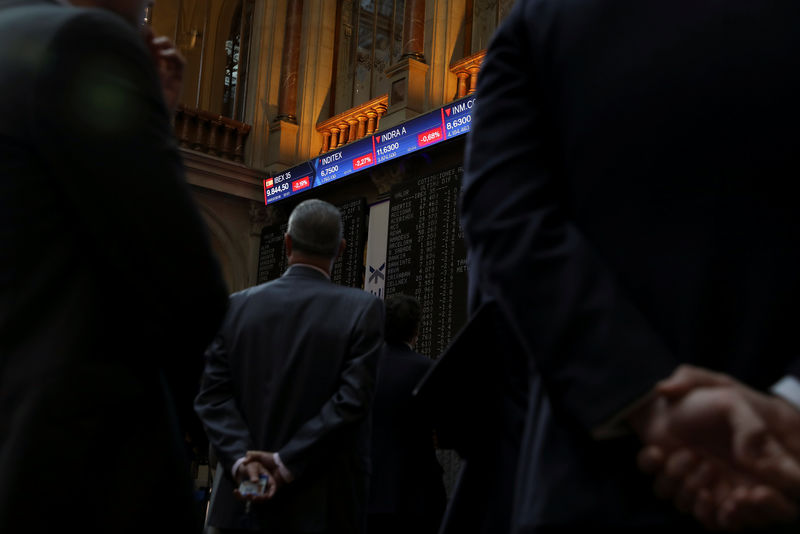By Caroline Valetkevitch
NEW YORK (Reuters) - U.S. stocks posted strong gains after a sharply volatile session on Tuesday, recovering from the biggest one-day declines in the Dow and S&P 500 in more than six years, while commodity prices fell.
Wall Street indexes repeatedly swung from positive to negative territory during the session. The Dow had a more than 1,100-point difference between its intraday high and low.
The Dow posted its biggest daily percentage gain since Jan. 29, 2016, while the S&P 500 scored its biggest one-day gain since Nov. 7, 2016, the day before the election of Donald Trump as president.
Some strategists viewed the recent selloff, which began last week amid concerns over higher interest rates and lofty valuations, as a healthy pullback after a rapid run-up at the start of the year. They argue that the improving economic outlook is a positive for stocks overall.
But they said it could take some time before the market settles down.
"You'll probably see a little bit of this volatility - my gut feeling tells me - probably for another couple of days, and then things will calm down somewhat," said Peter Costa, president of Empire Executions in New York.
Monday's move was a break from many months of relative calmness and left market participants grappling with an implosion of products that bet against volatility.
The Cboe Volatility Index, known as the VIX (VIX), which is the most widely followed barometer of expected near-term volatility for the S&P 500, closed lower, a day after it hit its highest level since 2015.
On Wall Street, all but two S&P 500 sectors ended higher, led by gains in economically sensitive materials, technology and consumer discretionary indexes. Rate-sensitive utilities (SPLRCU), down 1.5 percent, led decliners.
"Despite violent moves in the last couple days in the market, fundamentals in the economy are very strong and it's not just the U.S., it's throughout the global economy," Alicia Levine, head of global investment strategy at BNY Mellon Investment Management in New York.
The Dow Jones Industrial Average (DJI) rose 567.02 points, or 2.33 percent, to 24,912.77, the S&P 500 (SPX) gained 46.2 points, or 1.74 percent, to 2,695.14 and the Nasdaq Composite (IXIC) added 148.36 points, or 2.13 percent, to 7,115.88.
The pan-European FTSEurofirst 300 index (FTEU3) lost 2.50 percent and MSCI's gauge of stocks across the globe (MIWD00000PUS) shed 0.54 percent. Emerging market stocks (MSCIEF) lost 2.74 percent.
Commodities remained gloomy, with oil and industrial metals all falling, as the year's stellar start for risk assets rapidly soured.
U.S. crude
Copper
Gold prices fell 1 percent to a 2-1/2-week low. Spot gold
U.S. Treasury prices were last down slightly. Earlier, volatile equity markets led investors to seek out lower-risk bonds, but many investors remained nervous after a week-long bond rout sent yields on Monday to four-year highs.
Benchmark 10-year notes (US10YT=RR) last fell 3/32 in price to yield 2.8054 percent, from 2.794 percent late on Monday.
The original trigger for the equity sell-off was a sharp rise in U.S. bond yields late last week, after data showed U.S. wages increasing at the fastest pace since 2009. That raised the alarm about higher inflation and, with it, potentially higher interest rates.
"Once rates started moving, that kind of exposed some of these levered short VIX sales. A very crowded trade, it just took a while to unwind that," said John Lynch, Chief Investment Strategist at LPL Financial in Charlotte, North Carolina.
The dollar was barely up against a basket of currencies, paring gains as Wall Street rallied late.

The dollar index (DXY) last rose 0.15 percent, with the euro (EUR=) down 0.03 percent to $1.2372.